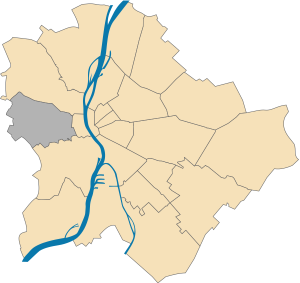Discovering Hegyvidék: Budapest’s Scenic 12th District
Nestled in the picturesque Buda hills, Hegyvidék, also known as the 12th district of Budapest, offers a unique blend of natural beauty and historic charm. From its lush green forests to its rich cultural heritage, this district is a must-visit for anyone exploring the Hungarian capital.
Introduction
Hegyvidék, translating to “Highlands” or “Mountain-land”, is the official name of the XII district of Budapest. Located on the west bank of the Danube, this district stands out with its scenic landscapes and historic landmarks.
Location

Situated in the Buda region of Budapest, Hegyvidék is bordered by the 2nd district to the north, the 1st district (Castle district and Gellérthegy) to the east, and the 11th district to the south. Its western boundary also marks the city’s outer limit.
Geography
Hegyvidék is unique as the only district on the Buda side without a direct connection to the Danube River. It sprawls across the green, hilly suburban area of Buda. Often referred to as the “lung of Budapest”, Hegyvidék is home to many of the city’s untouched green forests. The district also boasts the highest hill in the urban area, standing 527 meters above sea level.
Landmarks
- Elizabeth Lookout at János Hill: A prominent viewpoint offering panoramic views of the city.
- Buda Hills: A testament to the district’s natural beauty, these hills are perfect for hiking and nature walks.

History
Historical Footprints: Delve into the district’s rich tapestry, which reveals the stories of quaint settlements, farmlands, woodlands, and vineyards of Buda. The Krisztinaváros emerged in the valley between Castle Hill and Buda Hills. By the 18th century, this area was a military zone known as the “Glacis.” Thankfully, Archduchess Maria Christina paved the way for development in 1772, leading to the birth of the Krisztina Town. The Városmajor, locally known as ‘Major’, was once a meadow and is now a verdant park, established in 1787.
Natural Wonders: Buda’s most significant watercourse, the Ördög-árok, once flowed through Városmajor. By 1920, the park was renovated, and part of it was developed. A significant attraction is the lower terminus of the Budapest cogwheel railway, located in the park’s northern corner.

Historical Valleys: District XII boasts valleys, once under the ownership of Buda’s Carmelites. The Gábor Döbrentei-coined names Zugliget and Virányos refer to the valleys stretching towards Krisztinaváros. Nestled in the southern tip of Virányos lies the old Water Town cemetery, the resting place of the brave souls from the Ignác Martinovics uprising.
District Evolution: The second half of the 19th century witnessed the rise of settlements, especially after the decline of the vineyards. Despite this, the area remains a hiker’s paradise, offering a panoramic view from the Glider, launched in 1970.
Royal Estates Turned Residential Havens: These hilly regions were once royal hunting grounds and were later converted into Buda’s elite estates. Their strategic location played a pivotal role during the Christian liberation of Buda. The 19th century introduced viticulture, and the latter half saw the rise of villas, propelled by Mór Jókai’s influence. The Fogaskirche railway, established in 1874, further spurred growth.
Natural Treasures: The crowning jewels of District XII are the Buda Hills: János Hill, Sváb Hill, Széchenyi Hill, Csillebérc, and the Budakeszi Forest. These pristine terrains offer a plethora of outdoor activities. Enjoy breathtaking vistas from the Elisabeth Lookout atop János Hill or relive history with a journey on the Széchenyi Hill Children’s Railway.
Modern Developments: The late 19th and early 20th centuries witnessed an evolution from holiday resorts to grand villas, attracting the city’s elite. Modern establishments like the Hungarian Optical Works shaped the district by the turn of the century. A key landmark is the University of Physical Education, previously the Hungarian Red Cross Elizabeth Hospital.
Monumental Honors: In 2005 a Turul statue was erected, commemorating World War II victims. This monument stands as a somber reminder of the district’s past, etching both victims and their persecutors.
Demographics
As of 2016, Hegyvidék had a population of 58,171 residents. The district covers an area of 26.67 km^2, making it the 11th largest in terms of land area.
Education
Hegyvidék is home to several educational institutions, ensuring quality education for its residents. Some of the notable institutions include the Budapesti Tanítóképző Főiskola and the Eötvös Loránd Tudományegyetem.
Museums
- Hegyvidéki Helytörténeti Gyűjtemény and Hegyvidék Galéria: A museum and gallery that showcases the district’s rich history and culture.
Twin Towns
Hegyvidék has established twin-town relationships with:
Google Maps of Hegyvidék (District 12)
Conclusion
Hegyvidék is a gem in Budapest’s crown, offering a serene escape from the bustling city life. With its rich history, natural beauty, and cultural landmarks, it promises a unique experience for every visitor. Whether you’re a nature enthusiast, a history buff, or just looking to explore a different side of Budapest, Hegyvidék awaits with open arms.